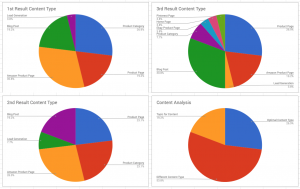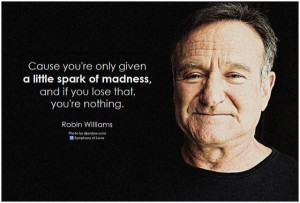If you’re in the business of traditional advertising, you’ve more than likely heard all the noise being made about the onset of online digital advertising. It seems almost impossible to search advertising trends online and not be hit with a barrage of articles saying things like, “2015 Shows Biggest Digital Ad Spend Ever!” or “Marketing Firms Look to the Future with Digital!” All of which can certainly make traditional advertisers feel passé and out of touch. But the important thing to remember is that all the noise about digital advertising is just that: Noise.
That’s not to say that digital advertising isn’t getting quite a bit of attention. Since so many (if not most) people are on mobile devices, laptops, or tablets, it just make sense for businesses to feel digital is the next logical step in advertising. But is it? Recent studies show online digital advertising may not be the marketing juggernaut so many people are making it out to be.
Easily Ignored
A recent study was conducted to determine whether or not paid online advertising was actually effective. Looking at the practices of 456 internet users, the study surveyed their reactions to banner/display ads, social ads, and sponsored search engine results. The findings showed 79% of internet users virtually never click on the online ads they see, while 38% never even notice them, at all. Also, only 36% have discovered a new brand or product via an online ad, and 90% have never followed through with a purchase or submitted contact information after clicking on such an advertisement. These numbers are overwhelming proof that while more and more people may be spending their time online, advertising in such a venue does not have any real impact.
More Annoying
While almost all kinds of advertising are capable of causing some feelings of irritation in people, none can evoke feelings of frustration and ire the way digital ads can. Studies show people tend to hate digital ads more than other types of advertising, and with good reason. Digital online ads have a tendency to appear at the most inconvenient times, often slowing down webpages and causing users to have to constantly shut them down to see the webpage content. Even worse are the digital advertisements created based on a user’s browser and purchasing history. Meant to be tailored to the user’s preference and give them a “personalized” advertising experience, these ads are viewed by 71% of internet users as bothersome and intrusive. Not a good sign for digital advertising ROI.
Ad Blockers![]()
As evidence shows, too many online ads can serve to irritate, rather than intrigue a potential customer. In fact, it has gotten so bad that most internet users have ad blocking software in place to keep from seeing such advertisements. An average of 150-200 million people use ad blockers on their laptop/desktop browsers, and this number is increasing at a rate of 41% annually. This is alarming news for websites that depend on online ads for revenue. As a result, sites such as The Washington Post restrict users from viewing their content if ads on their website are blocked, forcing readers to either sign up for a newsletter or pay for a site subscription. Forced to choose between annoying ads and annoying newsletters (or paying for once free content), users have grown resentful and have started to cease visiting these websites altogether, thus blocking the ads in a whole different way.
 All these factors prove that you can lead a user to your digital advertisement, but you can’t make them look at it. This is why traditional advertising remains a far more effective marketing option. Not only do people tend to view it as less invasive than digital, but studies show they are more receptive to it, as well. And when traditional advertising employs tools such as vanity 800 numbers, it can increase response rates by up to 50%. Digital advertising, paid search campaigns, and banner style ads simply cannot provide ROI like this, and not without taking click fraud, ad blockers and other tracking prevention technologies that are in the way of clean data.
All these factors prove that you can lead a user to your digital advertisement, but you can’t make them look at it. This is why traditional advertising remains a far more effective marketing option. Not only do people tend to view it as less invasive than digital, but studies show they are more receptive to it, as well. And when traditional advertising employs tools such as vanity 800 numbers, it can increase response rates by up to 50%. Digital advertising, paid search campaigns, and banner style ads simply cannot provide ROI like this, and not without taking click fraud, ad blockers and other tracking prevention technologies that are in the way of clean data.
Don’t let digital advertising seduce you into making the wrong decisions for your business. Use a mix of digital and traditional. It will go further, gain better exposure, deliver a well-rounded campaign, and one that has solid results and tracking tools in place.
Read more about winning the fight against ad blockers using traditional channels to get you there.
Stats and sources:
- An average 150 – 200 million people use ad blockers on their laptop/desktop browsers
- Increasing at a rate of 41% annually
http://www.theguardian.com/
- 79% virtually never click online ads they see
- 38% ignore them, altogether
- 71% feel ads that are “personalized” or “behavior-based” are annoying and intrusive
- Only 36% of internet users have found a new brand or product via an online ad
- 90% have never followed through with a purchase or submitted contact information after clicking an ad
http://www.impactbnd.com/
Digital & Social Articles on Business 2 Community(46)






